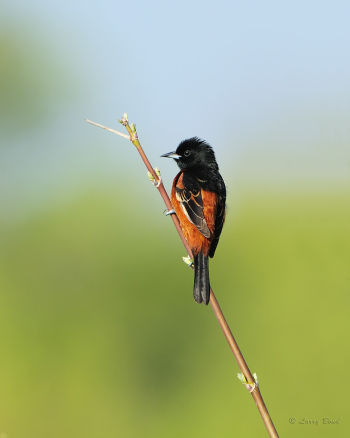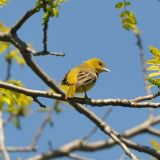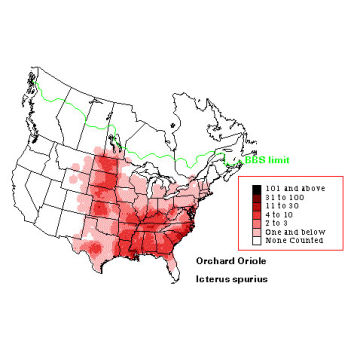18 cm (7") Common but local. Southeastern Canada, central and eastern United States. Orchards, suburban shade trees, parks and gardens, scattered trees along waterways.
The smallest oriole.
Male: black head, throat, upper breast, upper back and tail. Lower back and belly are brick red or chestnut.
Female: unstreaked olive-green upperparts. Yellow underparts. Two white wing bars.
Immature Male: unstreaked olive-green back. Well defined black bib. Greenish-yellow lower breast and belly.
Song: rapid medley of flute-like notes, call is a distinctive low "chuck".
Videos
Watch
Credit: Larry Bond
Watch
Credit: Mike McDowell

 Altamira Oriole
Altamira Oriole
 Audubon's Oriole
Audubon's Oriole
 Spot-breasted Oriole
Spot-breasted Oriole
 Scott's Oriole
Scott's Oriole
 Hooded Oriole
Hooded Oriole
 Streak-backed Oriole
Streak-backed Oriole
 Baltimore Oriole
Baltimore Oriole
 Bullock's Oriole
Bullock's Oriole




